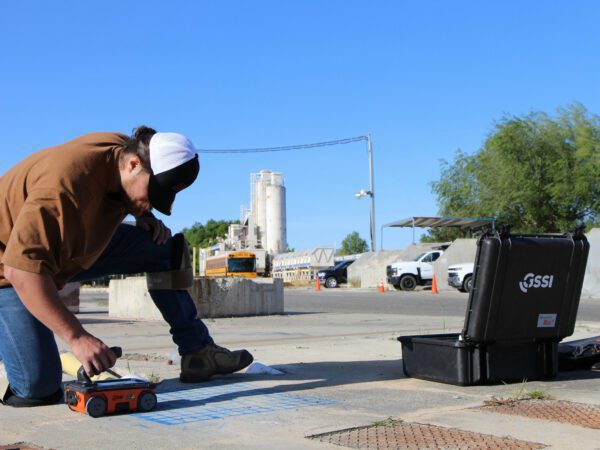Unveil the Transformative Power of Concrete Scanning in Taking Full Advantage Of Efficiency and Safety
Concrete scanning has actually arised as a critical tool in the construction sector, supplying unrivaled advantages in enhancing project performance and making certain safety and security criteria. By making use of sophisticated technology, concrete scanning enables experts to see past the surface, revealing covert intricacies that can influence the structural honesty of a building. The transformative power of concrete scanning lies in its capability to give real-time data and thorough insights, reinventing exactly how tasks are prepared and carried out. As we dive into the ins and outs of this innovative strategy, a globe of opportunities opens up, showcasing a brand-new age of construction techniques that prioritize precision and protection.
Significance of Concrete Scanning
Guaranteeing the architectural integrity and safety and security of building projects begins with the crucial action of carrying out comprehensive concrete scanning. Concrete scanning is a non-destructive technique used to find and map subsurface elements within concrete structures.
In addition, concrete scanning aids in optimizing task timelines and spending plan by avoiding unanticipated costs and hold-ups that might arise due to unexpected obstructions within the concrete. Ultimately, spending in extensive concrete scanning is a positive technique that improves both efficiency and security in building and construction tasks.
Just How Concrete Scanning Functions
Concrete scanning operates as an important device in construction tasks by utilizing advanced innovations to spot and map subsurface components without causing structural damage. Ground Penetrating Radar (GPR) and Electromagnetic Induction (EMI) are two key approaches used in concrete scanning.
Throughout the scanning process, the data accumulated is evaluated in real-time, permitting prompt identification of potential hazards or challenges under the surface. By employing these advanced innovations, concrete scanning considerably minimizes the danger of pricey problems and injuries on building and construction sites.
Advantages of Concrete Scanning
One of the primary advantages of concrete scanning is the capability to find and find ingrained items such as rebar, post-tension cables, and avenues precisely. Concrete scanning helps in preparation and designing extra efficiently, as it supplies exact information regarding the area and depth of architectural components.

Study: Concrete Scanning Success

In an additional case, a building and construction firm made use of 3D concrete scanning to evaluate the problem old concrete structures in a historic building. The comprehensive scans given beneficial understandings into the level of damage and helped focus on maintenance initiatives successfully. By proactively resolving areas of concern recognized with scanning, the company had the ability to prolong the lifespan of the framework and make certain passenger security.
These study underscore the transformative power of concrete scanning in enhancing efficiency, accuracy, and safety in building tasks.
Applying Concrete Scanning in Projects
Applying sophisticated scanning technologies during building tasks has actually become increasingly vital for boosting precision and security. By integrating concrete scanning into project planning and implementation, building groups can determine prospective risks, such as rebar or post-tension cables, concealed within concrete frameworks. This positive method lessens the danger of accidents, hold-ups, and expensive rework, ultimately causing a lot more effective job timelines and spending plans.
To execute concrete scanning effectively, job managers ought to work together carefully with knowledgeable scanning specialists to establish one of the most suitable scanning methods for site link the certain job demands. Involving scanning experts from the early phases of a project enables the group to produce extensive scanning plans that attend to crucial areas of concern and make sure extensive data collection.
Furthermore, integrating concrete scanning into routine task workflows can improve decision-making processes, as real-time check information offers prompt understandings right into the condition of concrete frameworks - Concrete Scanning. This data-driven strategy promotes informed analytical and enables teams to make modifications immediately, cultivating read more a society of effectiveness and safety throughout the project lifecycle

Final Thought
In conclusion, concrete scanning plays a critical function in enhancing performance and safety and security in building and construction projects. By using sophisticated modern technology to detect and map out underlying structures within concrete, this process assists to avoid pricey errors, ensure architectural stability, and decrease risks on site. With the capacity to reveal hidden components and supply accurate information, concrete scanning shows to be an important device for optimizing project results and making the most of overall success.
Concrete scanning is a non-destructive approach utilized to spot and map subsurface elements within concrete structures. Furthermore, concrete scanning helps in optimizing project timelines and spending plan by preventing unexpected prices and hold-ups that may arise due to unexpected obstructions within the concrete. One significant situation research study entails a large-scale remodelling task where concrete scanning played a critical duty Discover More in making sure task success.In an additional case, a building firm used 3D concrete scanning to assess the problem of maturing concrete structures in a historical structure. By integrating concrete scanning into task planning and implementation, building and construction teams can recognize possible dangers, such as rebar or post-tension wires, concealed within concrete frameworks.